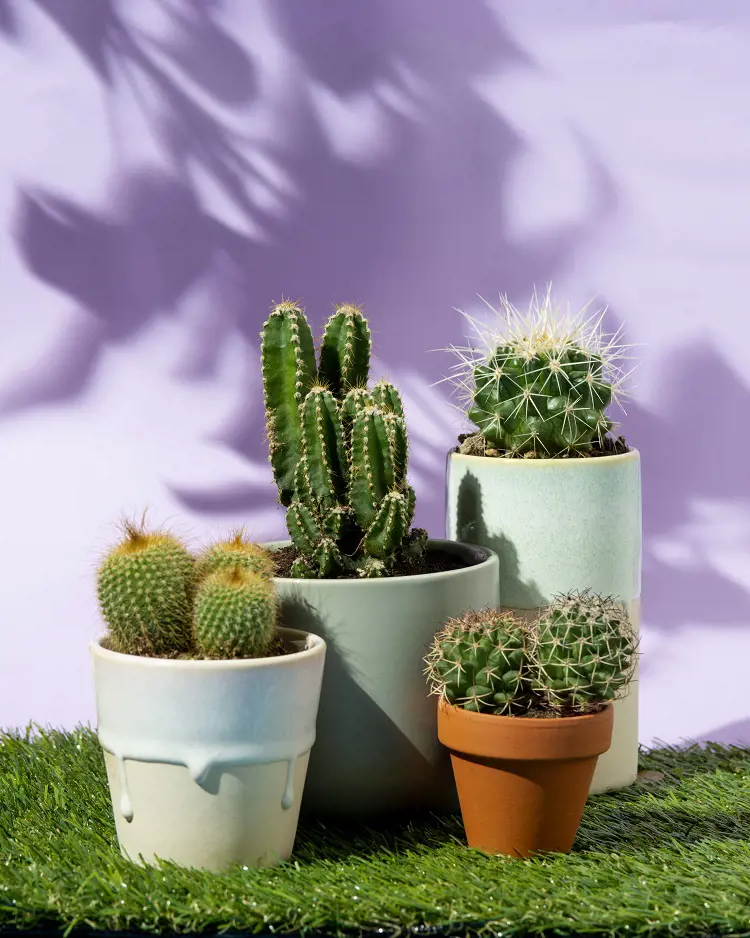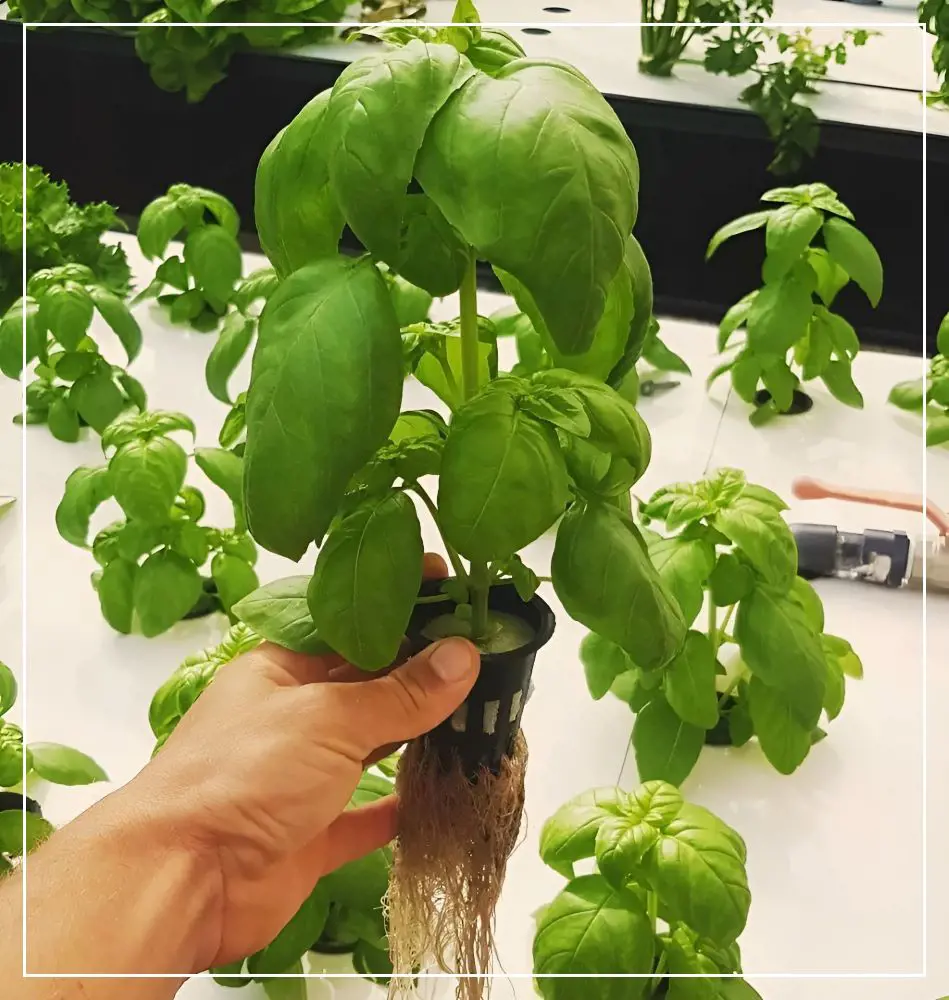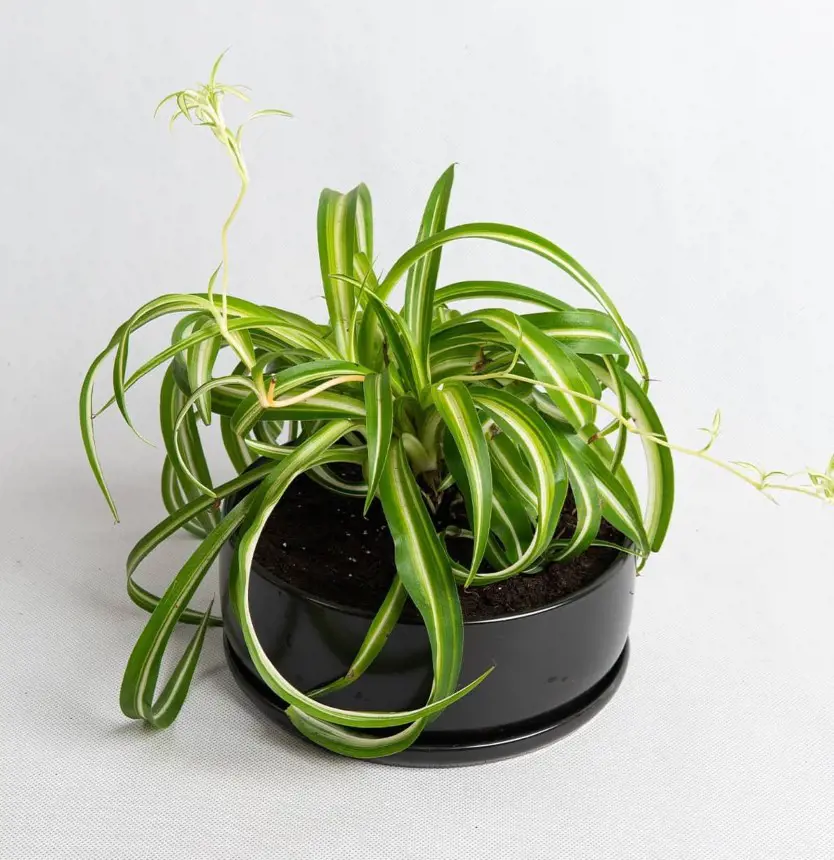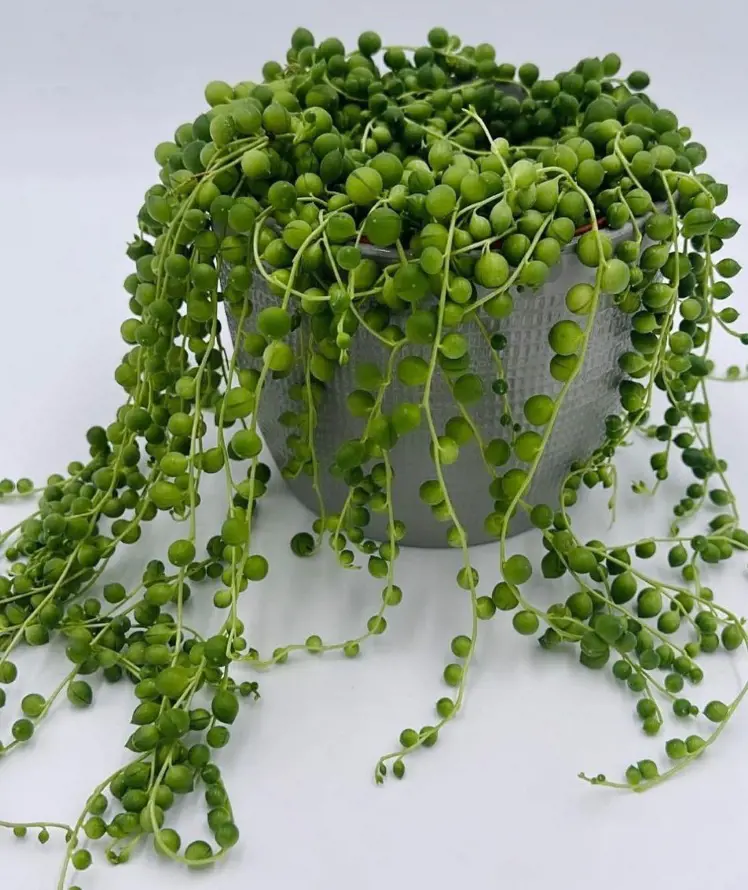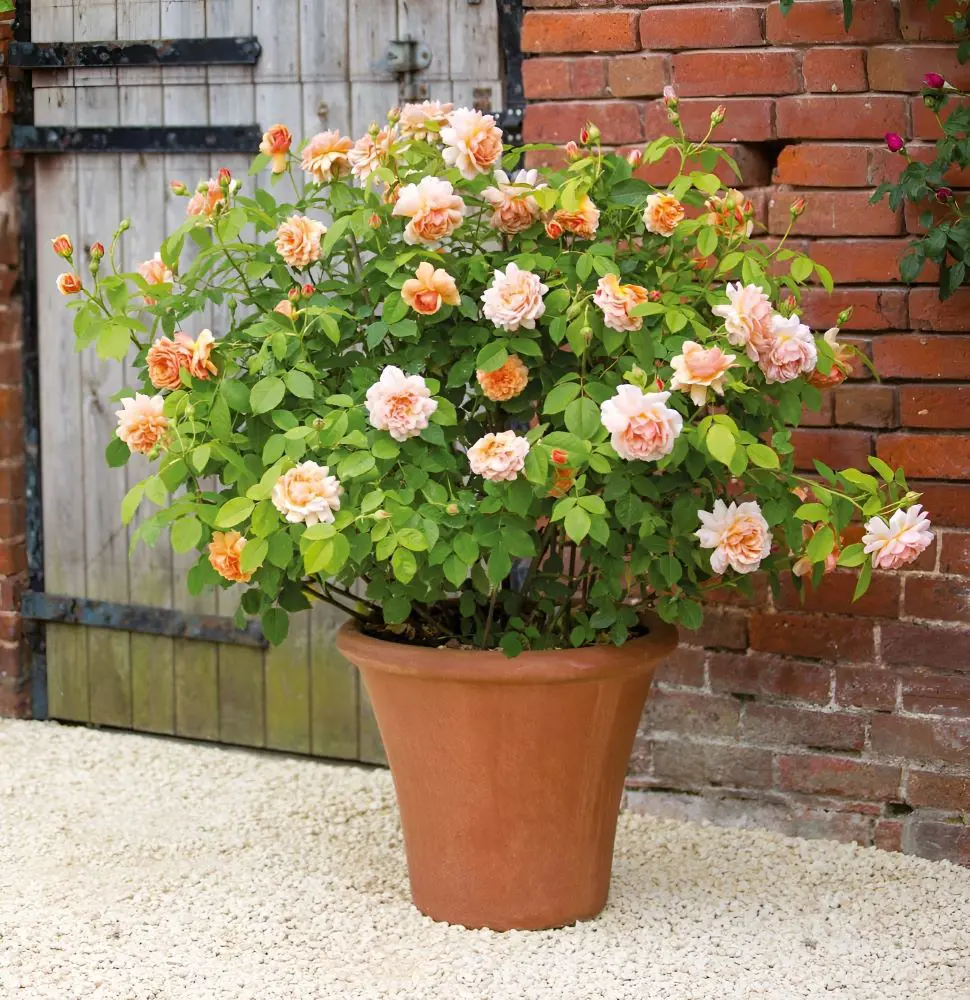How To Propagate Pothos Plants
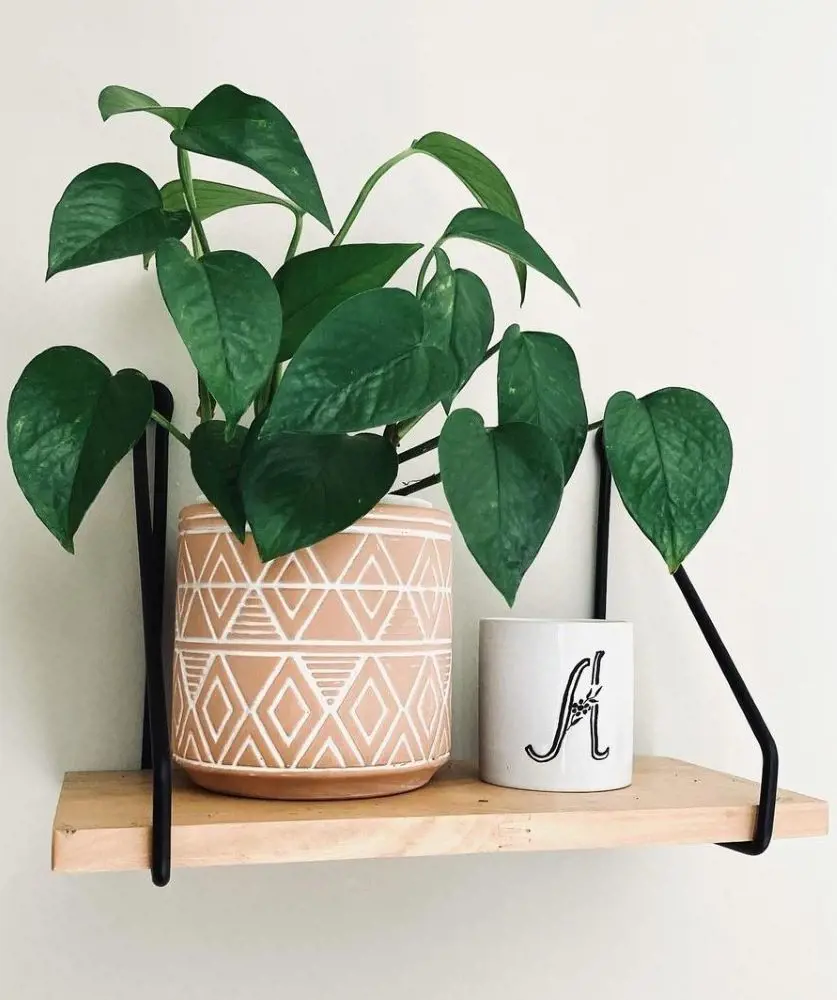
This post may contain affiliate links. If you make a purchase through links on our site, we may earn a commission.
Pothos is a beloved houseplant cherished for its easy-going nature and aesthetic appeal. Propagating pothos not only allows enthusiasts to expand their indoor greenery but also presents an opportunity to share the joy of gardening with others.
There are several methods of propagation to explore, from the simplicity of stem cuttings to the fascinating process of layering. Whether you're a beginner gardener or an expert enthusiast eager to experiment, there's a propagation method suited to each of your preferences. Join us as we delve into the diverse world of pothos propagation.
When To Propagate
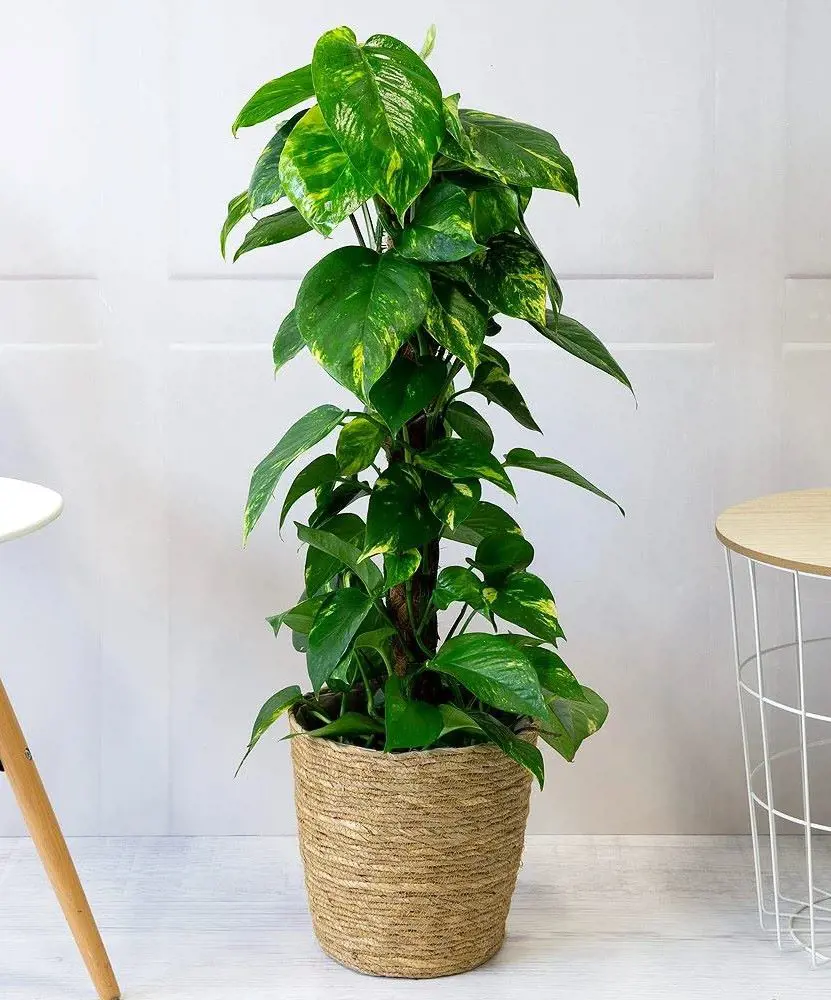
Propagate Pothos during the spring and summer months when temperatures are warmer and days are longer. Undertaking this process during warmer months provides optimal conditions for root development.
In the US, ideal months for propagation are typically April through September. During these months, the plant is in its active growth phase and more receptive to propagation efforts such as stem cuttings. Ensure the cuttings have at least one node and are placed in a moist growing medium to encourage root formation, leading to the successful propagation of this popular houseplant.
Things You’ll Need
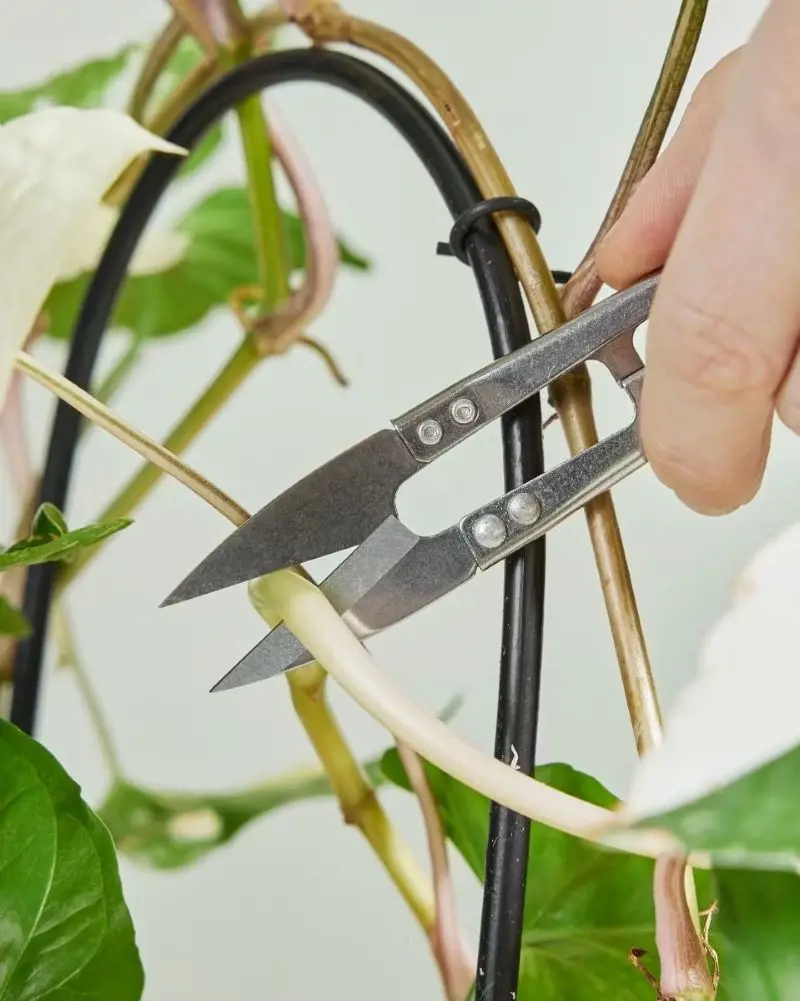
While propagating a pothos, you’ll need a few tools and equipment to work with. Some of the things include:
- Pothos Plant Cuttings: Select healthy stems with at least two nodes (where leaves emerge) per cutting. Cut just below a node using clean scissors or pruning shears.
- Clean, Sharp Scissors or Pruning Shears: These are essential for taking clean cuts on the plant stems to promote successful propagation.
- Clean Water: You'll need water for rooting the pothos cuttings. Tap water is generally fine, but some prefer using filtered or distilled water to avoid any potential contaminants.
- Glass or Jar: A transparent glass or jar is ideal for holding the water and allowing you to monitor the root development of the cuttings.
- Rooting Hormone (Optional): Rooting hormone can help stimulate root growth and increase the chances of successful propagation. While it's not strictly necessary for pothos, some gardeners find it helpful.
- Small Pots or Containers: Once the cuttings have developed roots, you'll need small pots or containers filled with potting soil for transplanting the rooted cuttings.
- Potting Soil: Use a well-draining potting mix suitable for houseplants. You can also mix perlite or sand to improve drainage.
- Spray Bottle: A spray bottle filled with water can help maintain humidity around the cuttings during the rooting process.
- Transparent Plastic Bag or Plastic Wrap (Optional): This can create a mini greenhouse environment to maintain humidity around the cuttings during rooting.
How To Propagate Pothos With Stem Cuttings
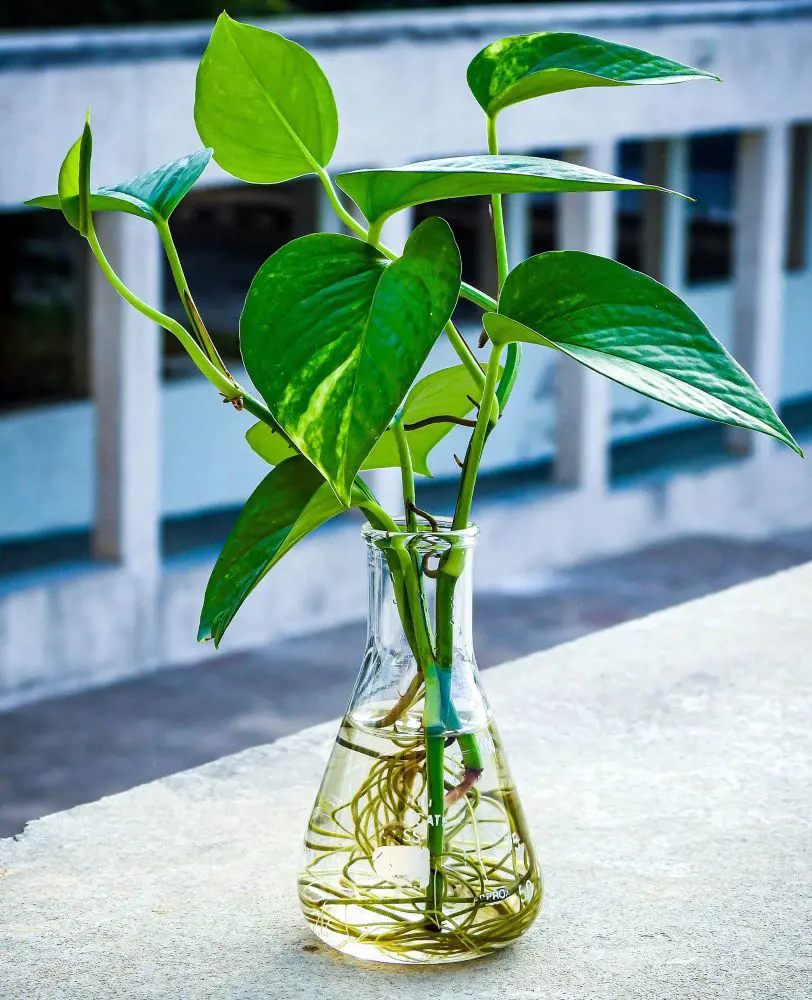
Propagating pothos plants through stem cuttings is highly successful, with a success rate typically ranging from 80% to 100%. This method is particularly effective because pothos stems readily produce roots when placed in water or soil. With proper care and conditions, such as adequate moisture and indirect light, new roots typically develop within a few weeks.
Select Healthy Stem Cuttings
Choose a mature, healthy pothos plant and identify stems with at least two nodes where leaves emerge. Healthy stems ensure successful propagation.
Prepare Cuttings
Use clean, sharp scissors to take 4-6 inch long cuttings just below a node. Clean cuts prevent damage and promote root growth.
Remove Lower Leaves
Strip away the leaves from the lower part of each cutting. This focuses the plant's energy on root development rather than maintaining foliage.
Apply Rooting Hormone (Optional)
Dip the cut end of each stem into rooting hormone powder or gel to encourage faster root development. Rooting hormone stimulates root growth.
Place Cuttings in Water or Soil
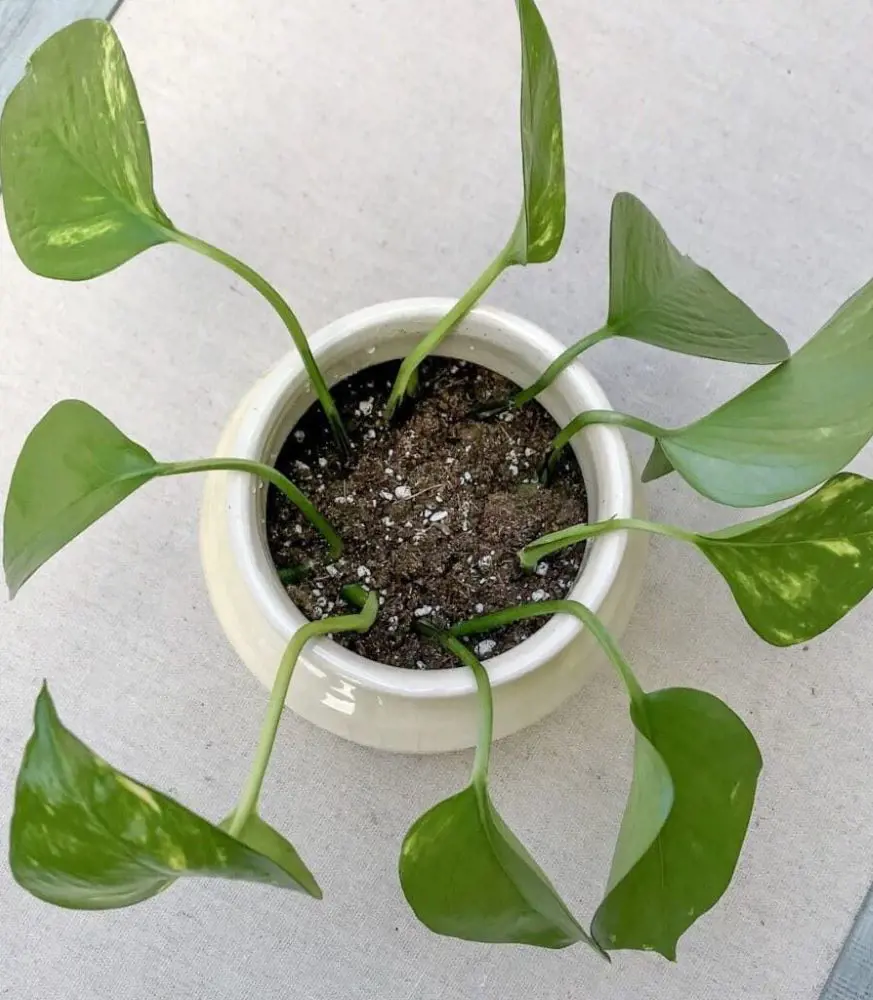
Insert the cut end of each stem into a container of water or moist potting soil. Water should cover the nodes. This provides hydration and promotes root growth.
Provide Adequate Light and Temperature
Place the cuttings in a location with bright, indirect light and maintain temperatures between 65-85°F (18-29°C). Suitable light and warmth support healthy growth.
Monitor and Maintain
Check the water level regularly if propagates in water, ensuring it remains clean and topped up. For soil propagation, keep the soil consistently moist but not waterlogged. Proper care ensures optimal conditions for rooting.
Transplant Rooted Cuttings
Once roots have developed (usually after a few weeks), carefully transplant the rooted cuttings into individual pots filled with well-draining potting soil. This encourages further growth and establishment.
Provide Ongoing Care
Water the newly transplanted cuttings as needed, keeping the soil evenly moist. Gradually introduce them to their preferred growing conditions, such as indirect light. Continued care ensures the health and vitality of the new pothos plants.
How To Propagate Pothos With Roots
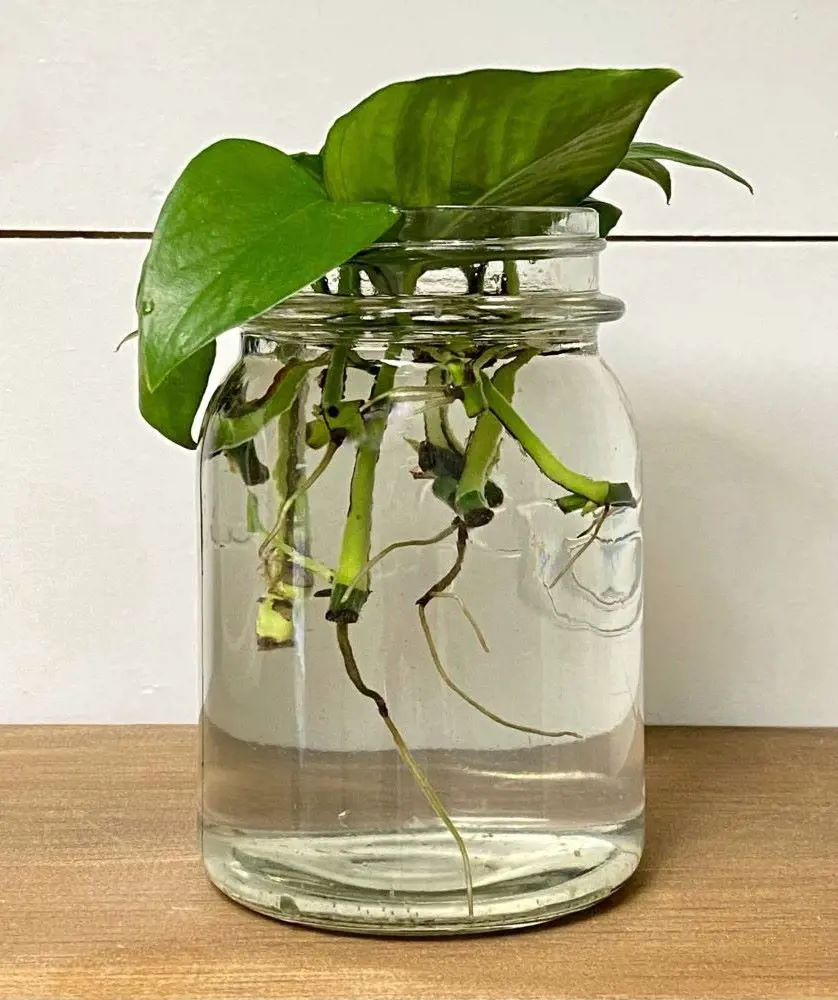
Propagating pothos with roots involves separating sections of an established plant, each with its root system, for transplantation. While less common than stem-cutting propagation, it's effective, especially for rejuvenating mature plants or creating multiple specimens.
This method ensures that each new plant has a head start with a developed root system, increasing its chances of successful establishment and growth.
Prepare the Parent Plant
Select a healthy and mature pothos plant to propagate. Ensure it has robust root systems and several stems to divide.
Remove the Plant from the Pot
Carefully remove the pothos plant from its pot, gently shaking off excess soil to expose the root system.
Divide the Root Ball
Using clean and sharp gardening shears, divide the root ball into sections, ensuring each section has both roots and stems.
Trim Excess Roots
Trim any excessively long or damaged roots using sterile pruning shears to encourage healthy growth in the new plants.
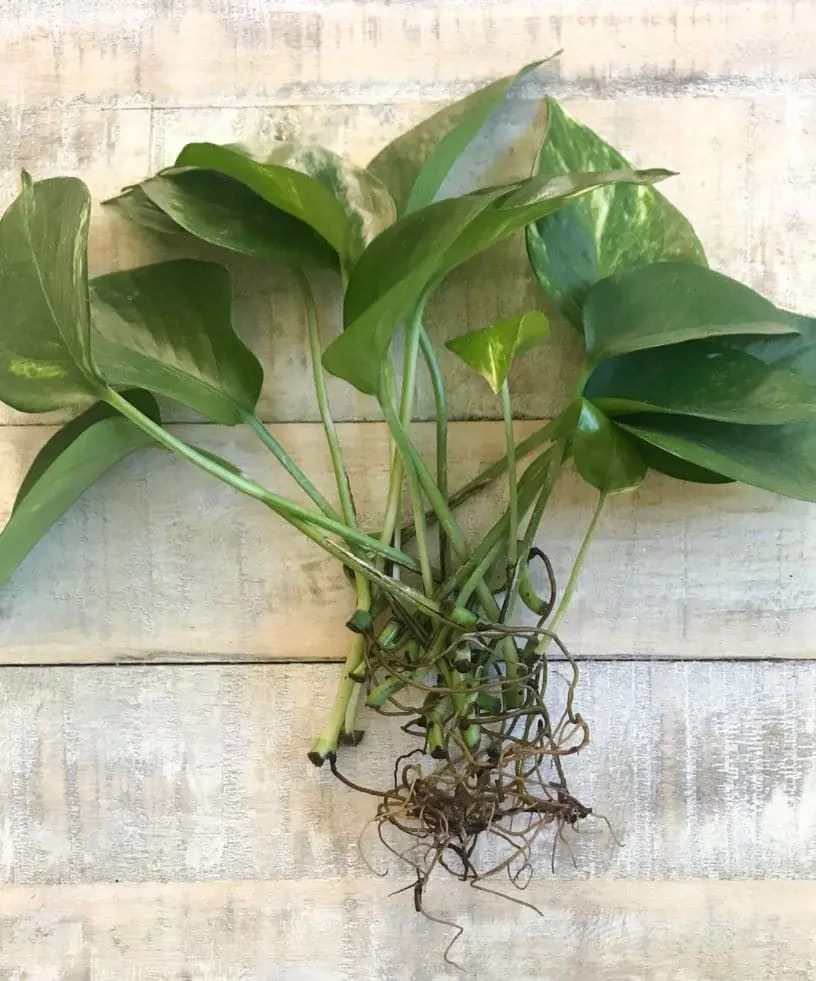
Plant Each Division
Plant each divided section into a separate pot filled with fresh potting soil. Ensure the roots are well-covered and the plant is stable.
Water and Provide Care
Water the newly potted divisions thoroughly, allowing excess water to drain. Place them in a location with indirect sunlight and maintain consistent moisture levels.
Monitor Growth
Keep an eye on the newly potted divisions for signs of growth. Ensure they receive proper care, including watering when the soil feels dry to the touch.
Transplant if Necessary
Once the new plants have established themselves and show signs of healthy growth, consider transplanting them into larger containers if they outgrow their initial pots.
Continue Regular Care
Maintain regular care routines, including watering, fertilizing, and pruning as needed. This ensures the continued health and vitality of the propagated pothos plants.
How To Propagate Pothos By Layering
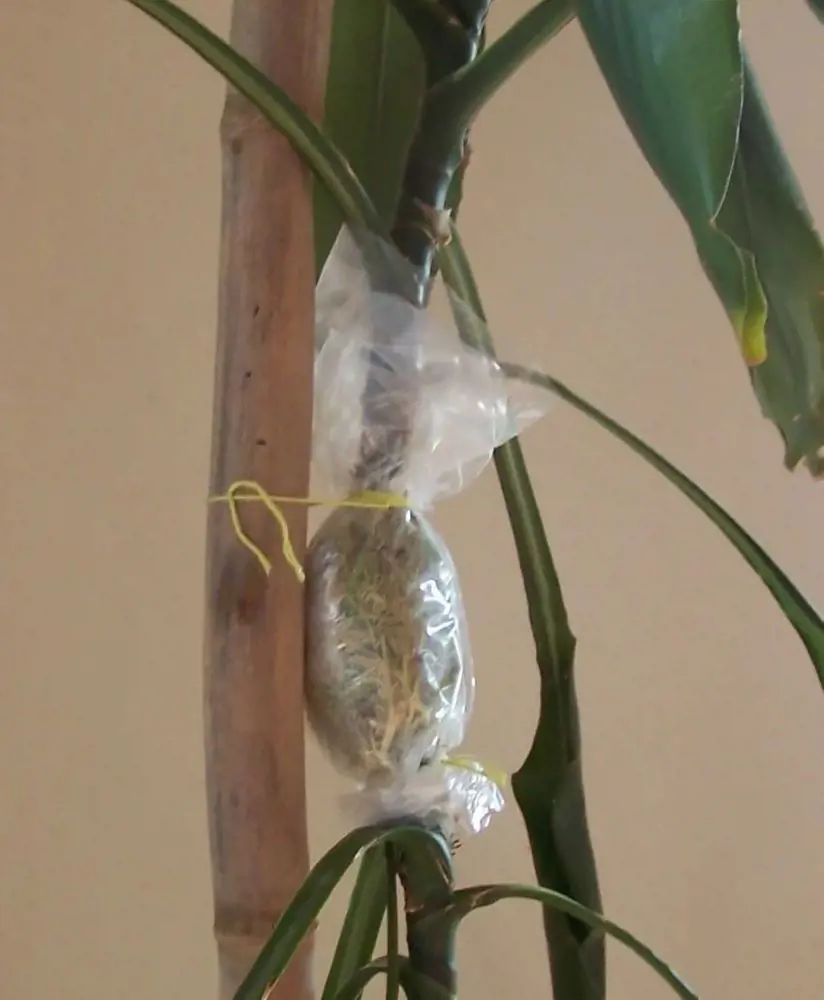
Propagating pothos by layering involves encouraging roots to develop on a stem while it's still attached to the parent plant. This process is moderately complicated as it requires making a small wound on the stem, applying rooting hormone, securing the wounded portion to the soil, and waiting for roots to form before separating the new plant from the parent.
These are the steps to follow:
Select a Healthy Stem
Choose a robust stem with nodes, where roots will emerge, ensuring it's free from damage or disease.
Make a Wound on the Stem
Create a small wound on the stem's underside to encourage root initiation, using a clean knife or scissors.
Apply Rooting Hormone
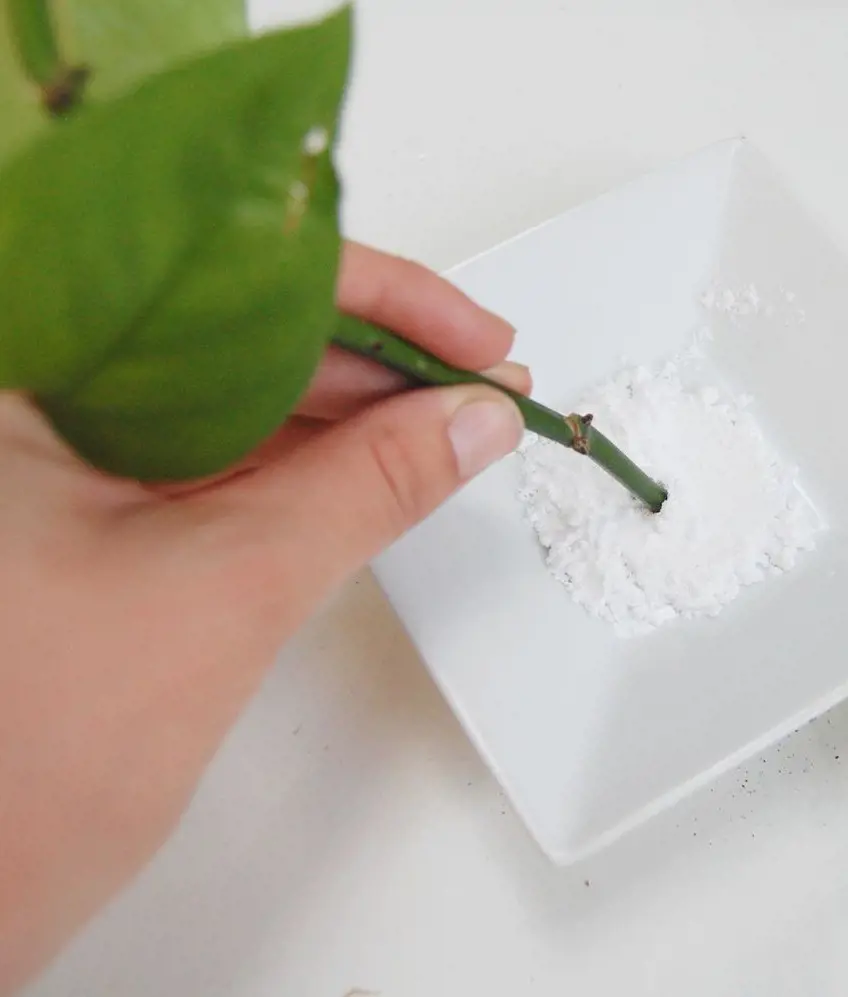
Apply rooting hormone to the wound to stimulate root growth and enhance the success rate of propagation.
Secure to Soil
Secure the wounded portion of the stem to the soil surface using a U-shaped wire or by burying it shallowly.
Maintain Moisture
Keep the soil consistently moist to support root development, avoiding waterlogging which may lead to rot.
Wait for Roots
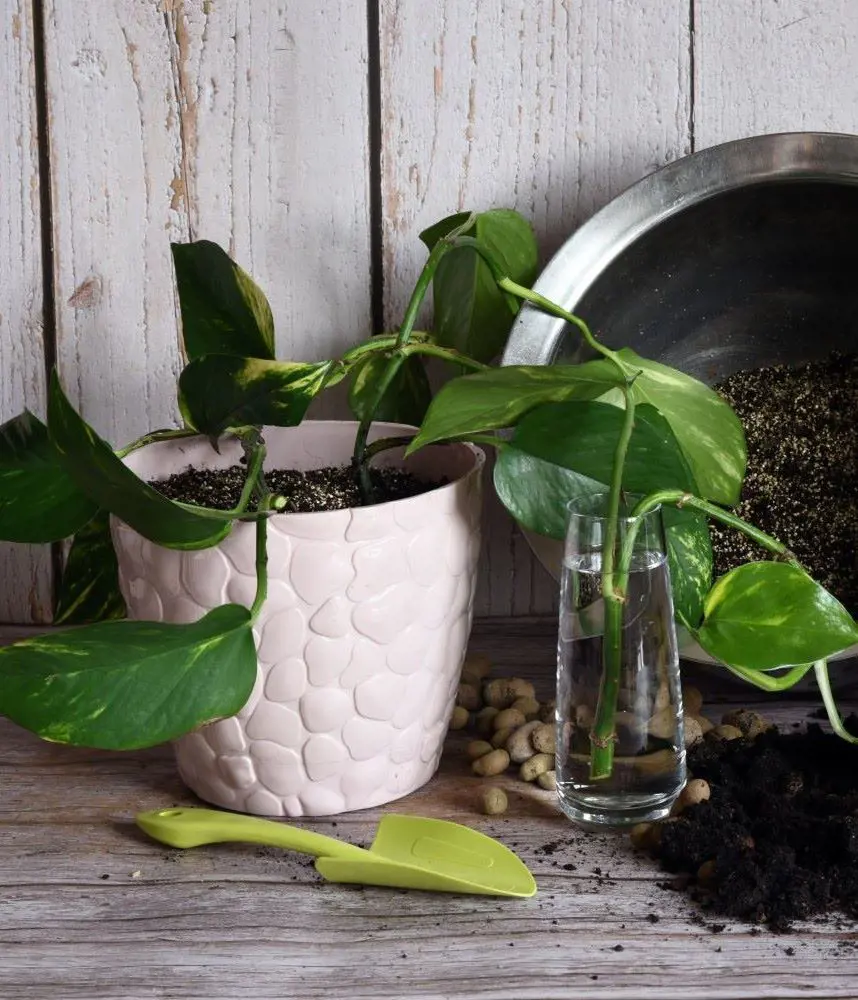
Exercise patience as roots develop from the wounded portion of the stem, typically within a few weeks.
Separate and Transplant
Once roots have formed, carefully sever the stem below the rooted portion and transplant it into its own pot with fresh soil.
Provide Care
Water the newly transplanted plant as needed and ensure it receives appropriate light and temperature conditions for healthy growth.
Recent posts
How To Propagate
How To Propagate
How To Propagate Cactus In 9 Ways
Propagation involves creating new plants from existing ones. In nature, this often happens through seed formation after flowers are pollinated. However, due to the shrinking natural habitats of cactus, it’s essential to propagate and care for t...
How To Propagate
Basil Propagation Methods: Flowers, Seeds or Cuttings
In the realm of culinary delights and garden magic, basil stands as a beloved herb, prized for its aromatic leaves and versatility in the kitchen. Yet, unlocking the secrets of basil propagation opens up a whole new realm of possibilities. From the d...
How To Propagate
How To Propagate Monstera Deliciosa
Monstera plants are popular indoor plants, making homes and offices cheerful and stylish. They're not just easy to grow but also thrive in any indoor setting. But if you're wondering how to make more Monstera plants, it might seem tricky. Start...
How To Propagate
How To Propagate Spider Plant
The Spider Plant is a resilient indoor plant appreciated for its arching leaves and spider-like offshoots. It's an ideal choice for plant enthusiasts due to its easy care. Propagating these plants is also simple and can be done in various ways, such ...
How To Propagate
How To Propagate String Of Pearls
Propagating String of Pearls is a fascinating and fulfilling process that allows you to create new plants from an existing one. This plant is a cute succulent from South Africa, known scientifically as Senecio Rowleyanus. It has long, hanging stems w...
How To Propagate
How To Propagate Roses In 12 Steps
Propagating roses might sound fancy, but it's a way to grow new rose plants from existing ones. It's like making baby roses. If you have a beautiful rose bush and want more just like it, you can do this through a process called propagation. Here's a ...
